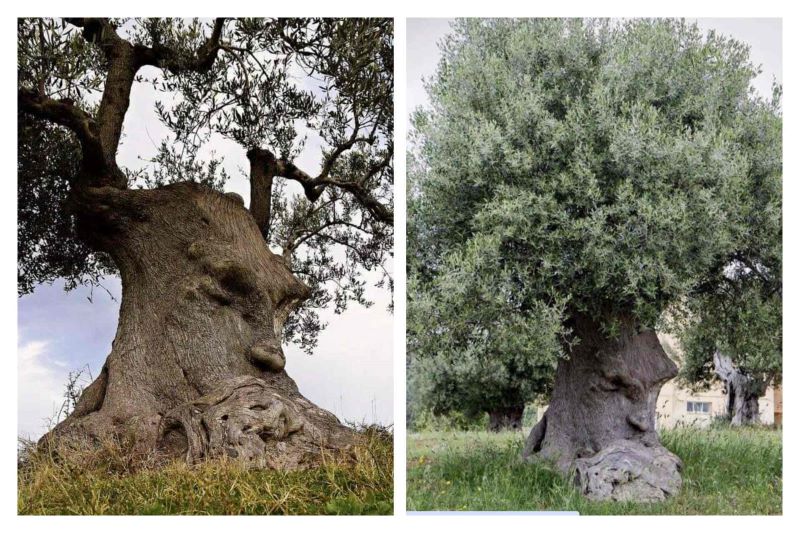In Puglia, Italy, there is a strange old olive tree that is thought to be at least 1500 years old, and possibly as old as 4000 years. This olive tree is known as “The Thinking Tree,” which is unmistakably one of nature’s ways of giving us something new to marvel at. It is believed that the thinking tree is the oldest olive tree in Puglia and in the world as well. A cursory glance at its trunk reveals a face with multiple eyes, a nose, and a mouth that seem to be carved into the bark.
Given that olives are a vital component of the local economy and culture, they are a representation of longevity and history. But the magnificence of the Ancient Olive Thinking Tree is only a small part of the rich tapestry of olive groves that have flourished for centuries in Puglia, Italy; an estimated 50 to 60 million olive trees with diverse trunk shapes and sizes make it understandable that some of them may resemble faces.

This Puglia thinking tree is a living example of the significance of olive trees in the Mediterranean region, having probably seen many generations and events throughout its life. Some of the world’s oldest continuously farmed olive groves, those in Puglia, bear the marks of centuries of human hands; the shapes of these trees, so different from one another in form, are silent monuments to the hands that have cared for and harvested them. One of the most prized products of these trees is olive oil, which has a history as rich as the groves themselves. Originally, only the upper classes of society could use it for anointing ceremonies; pharaohs and priests used it.
The Latin word “Oliva,” which translates as “Olive Tree,” is the source of the English word “oil,” indicating the importance of olive oil. It became a vital component of many industries, acting as a base for healthful preparations, a fuel source, and a culinary arts staple. Greeks arrived in Sparta in the eighth century BC, and Puglia was named Magna Grecia by the Hellenistic Civilization, which established several major centers. Some researchers believe that this tree is a remnant of an olive grove from that era of history.
After constructing the Via Appia, which connected Rome with Puglia, the Romans occupied the region in the fourth century BC. In 272 BC, they expelled the Greeks. The region flourished as an agricultural region, growing wheat and generating olive oil.

The history of Puglia’s olive trees begins in the chronicles of Roman history. These trees, praised in biblical scriptures for representing purity, abundance, and peace, also appear in the mythological story of Rome’s founding. According to legend, the twin brothers Remus and Romulus, the legendary founders of Rome, were said to have been born under the protective shade of an olive tree. This authoritative symbolism resonated deeply with the Romans, inspiring them to cultivate an abundance of these trees, which in turn laid the groundwork for the olive tree’s long-lasting economic contribution to the region.
A significant portion of human history and an enduring connection between nature and humanity are encapsulated in these ancient groves, each gnarled trunk and twisted branch telling a story of persistence and adaptation sculpted by the rhythms of nature and the needs of those who have depended on their fruits. But as production rose and cultivation expanded, olive oil became more widely used and became a necessity in people’s daily lives.
Therefore, keeping in mind the history of the thinking tree, it’s a priceless treasure and should be protected within nature’s rules. If you’re interested in olive tree information, then you must explore another olive tree in west Athens, Greece, known as “Plato’s Olive Tree,” which is thought to be 2400 years old and is a relic from the grove that formerly housed Plato’s Academy.
Read More: “Sisters,” The Olive trees of Noah







